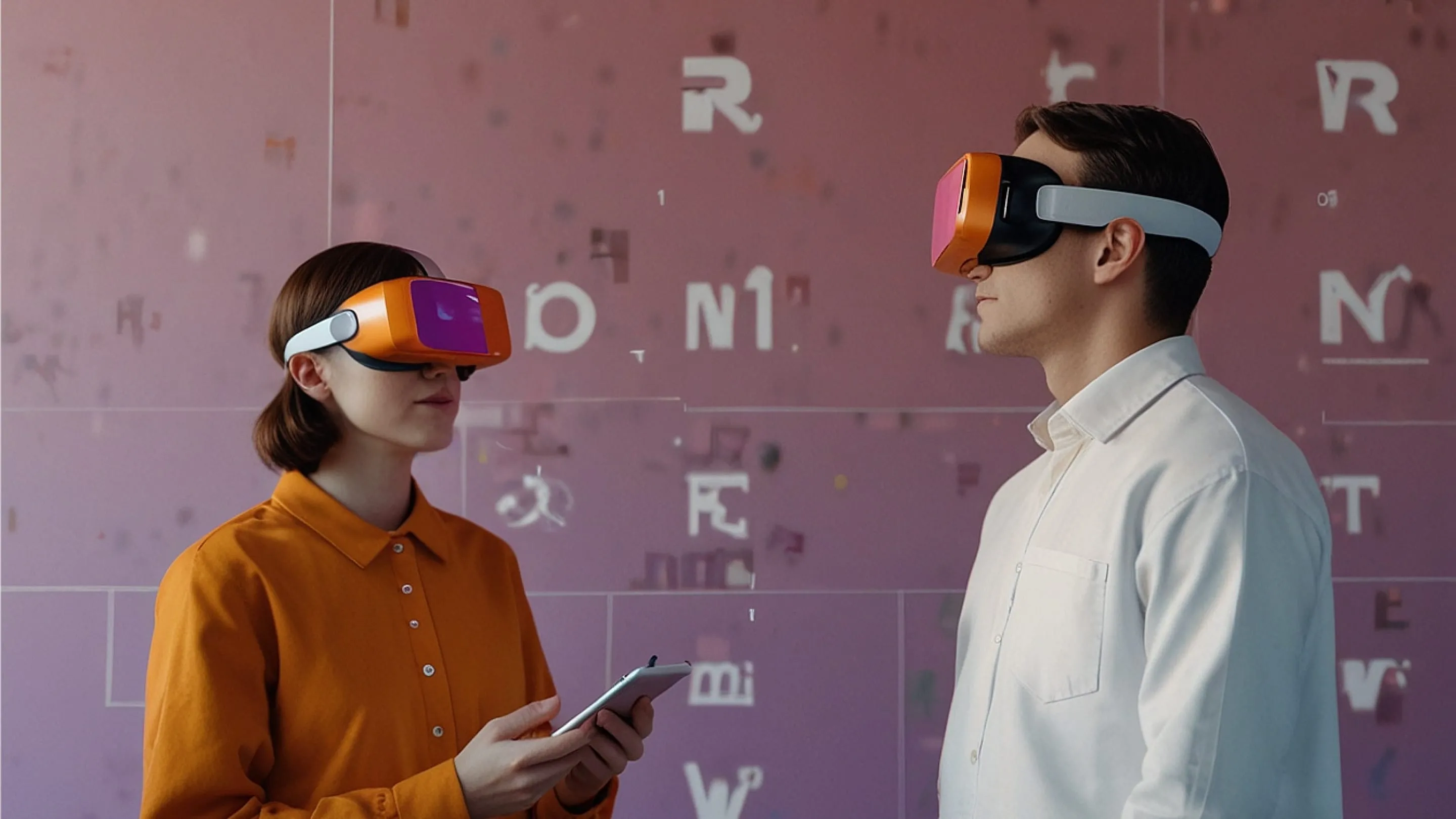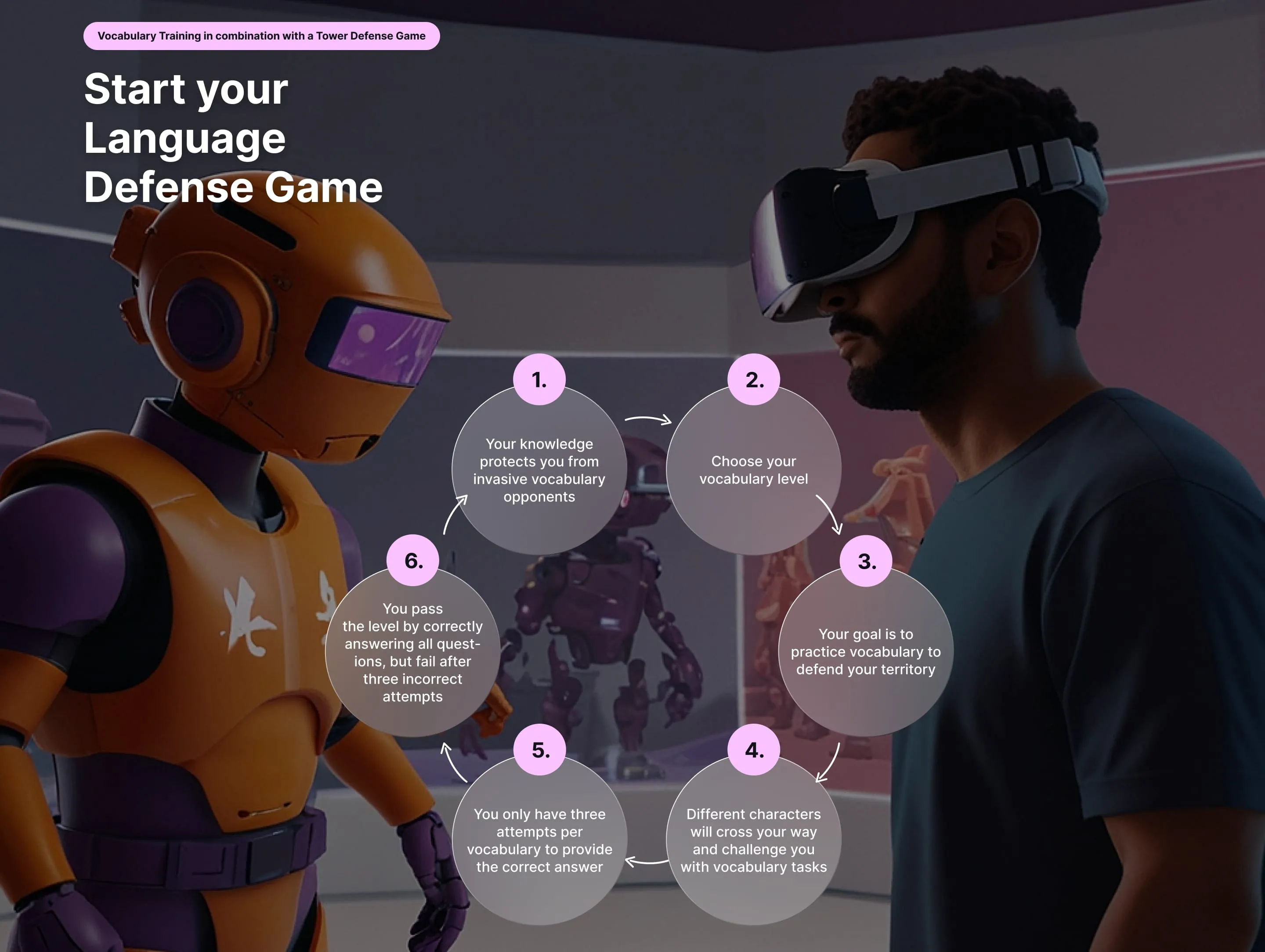Explore language
learning through
a new lens

Explore language
learning through
a new lens

Research & Development Lab
2024
Our Services
Agile Scrum
Qualitative User Research
Use Case Development
Technical Prototyping
Extended Reality Integration
Artificial Intelligence Integration
UX/UI Design
Documentation
A major problem faced by employees in international business environments is the discomfort and lack of confidence in using foreign languages to communicate.
Conventional language learning methods often offer limited adaptability to individual learning preferences and needs. With this in mind, we explore the possibilities and limitations of mixed reality technology (MR) to create more engaging, interactive and personalized learning experiences.
Taking into account the variety of MR hardware and the individual learning styles and paces of users poses an additional challenge for our multidisciplinary Research & Development team.
20
agile events
6
expertises in the team
+10
interviews

A user-centric approach to explore learning innovation
What creates an engaging learning environment an how can technology support it?
Our approach entails a careful exploration of a learning journey, encompassing all stages of learner interaction and engagement. Therefore we closely collaborate with language learners and teachers to understand their needs and preferences.

“At the end of the day, it’s not only about using an immersive technology, it’s about the overall experience.”
Anna Rumenova
UX/UI Designer, Taikonauten
The fundamentals of immersive language learning
This Research & Development project is all about experience. The insights gained from user interviews and expert focus groups are utilized to carefully develop a comprehensive learning journey.
This journey traverses different stages of language learning: from introducing new vocabulary and grammar to application in real-life contexts. This structured approach enables us to identify opportunities for potential MR experiences.

Unity-based prototype to support vocabulary training
Based on the question "What if vocabulary training became an immersive experience in your living room?", we develop a low fidelity prototype:
An MR scenario that transforms your home into an interactive playground for vocabulary training, resembling a tower defense game. The playful approach presents language-related challenges in an immersive game setting.

Test and evaluation environment for "Language Defense"
Continuous exploration and validation are integral to our agile approach, spanning from the discovery to the development phase.
Following this, we make the prototype accessible to real users for validation. The results gained from this initial reality check outside our Research & Development Lab provide important new findings, enabling us to iterate and enhance the user experience towards a minimal viable product.
5 user-centered AI scenarios for optimizing language defense
Based on user experiences, we synthesize our knowledge and compile forward-thinking optimization ideas through the use of AI:
- Scenario 1: AI identifies frequently incorrect or challenging vocabulary and generates language tasks based on relevant stored user data.
- Scenario 2: The ChatGPT-Assistant-API records sessions, creates user profiles and statistics and identifies common learning patterns to offer targeted supplementary measures to HR departments.
- Scenario 3: By uploading documents, companies can train the AI themselves to integrate business vocabulary and tailor learning content to individual requirements.
- Scenario 4: Speech recognition enables natural dialogues in different languages and their variations. The selection of voice colors, designs or difficulty levels further personalizes the overall experience.
- Scenario 5: Object and gesture recognition, along with a companion app, creatively engage colleagues on site in the gameplay or environment, while point systems and challenge modes foster collaborative learning in decentralized global teams.
Key take aways: The future of MR learning experiences
After extensive research, prototyping and reality checks, we indentified future scenarios for Language Defense and concluded the key links between MR technology and immersive language learning tailored to the demands of office life.
Our most important learnings:
- The innovative use of MR technology promotes motivation, creating a safe space for free experimentation with new languages.
- Companies can leverage MR to provide personalized and inclusive educational experiences, overcoming geographic barriers or expensive language trainings.
- MR technology enables learners in their "Apply & Immerse" phase to effortlessly experience realistic scenarios, including authentic conversations and cultural interactions.
